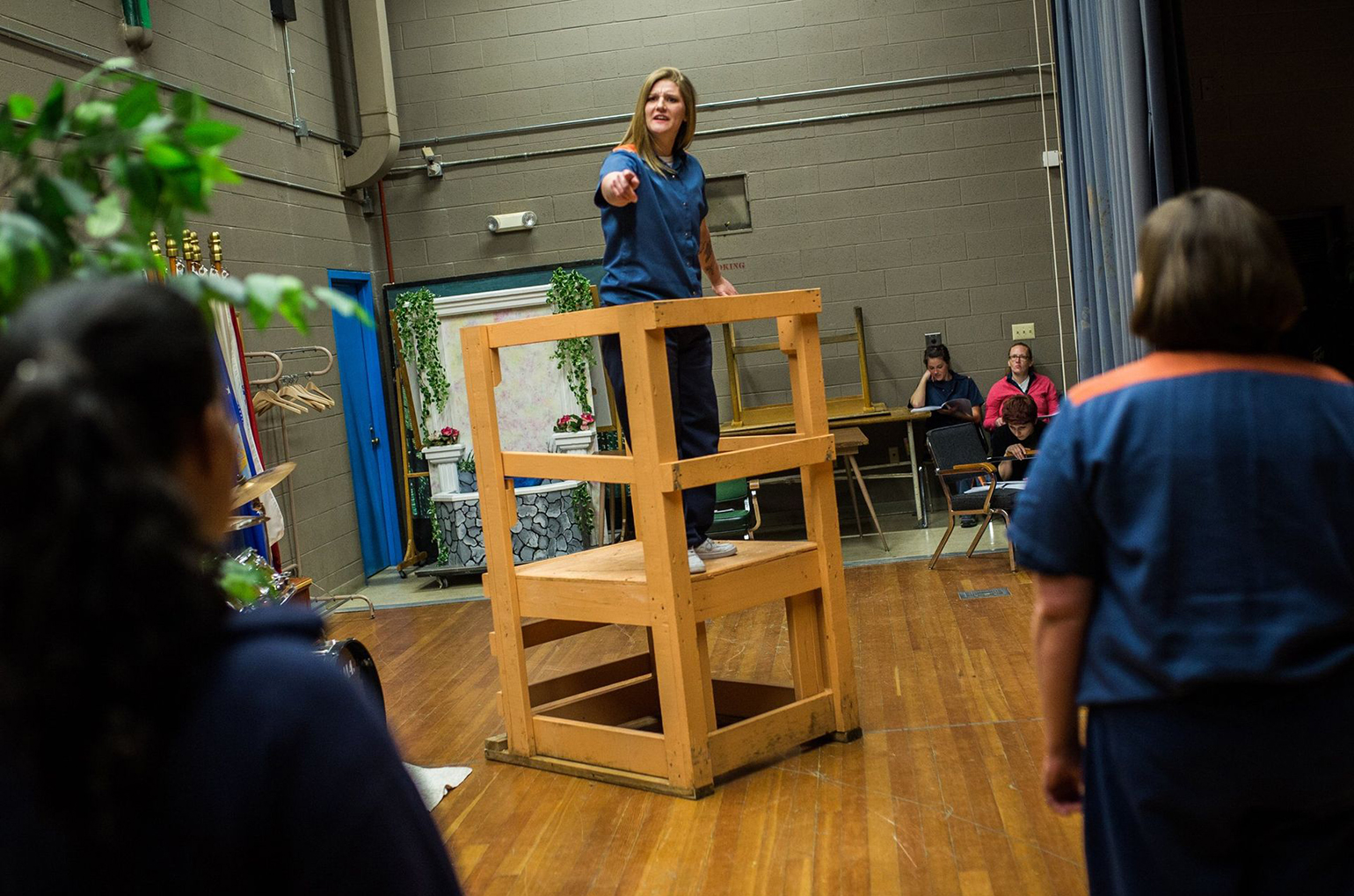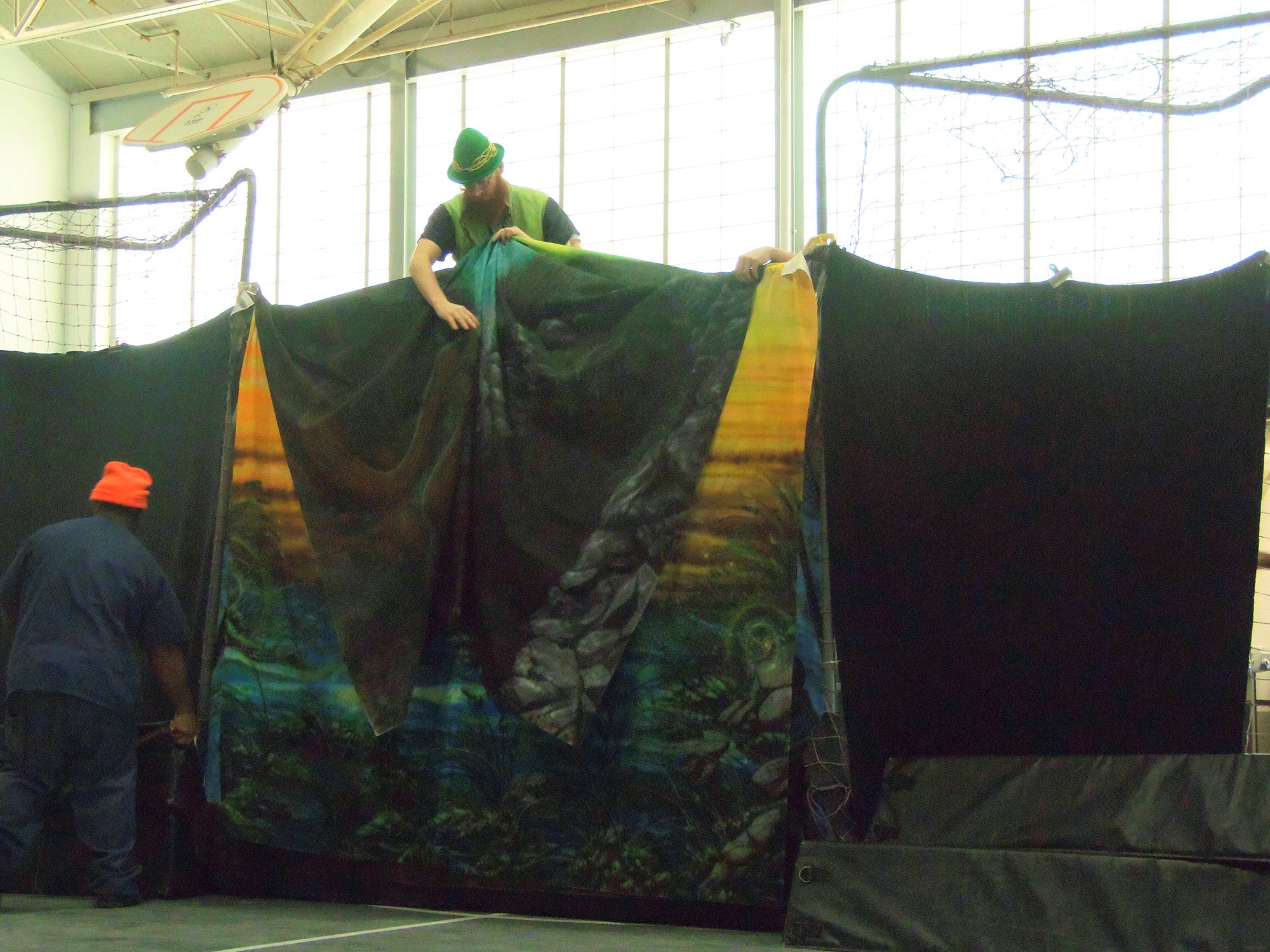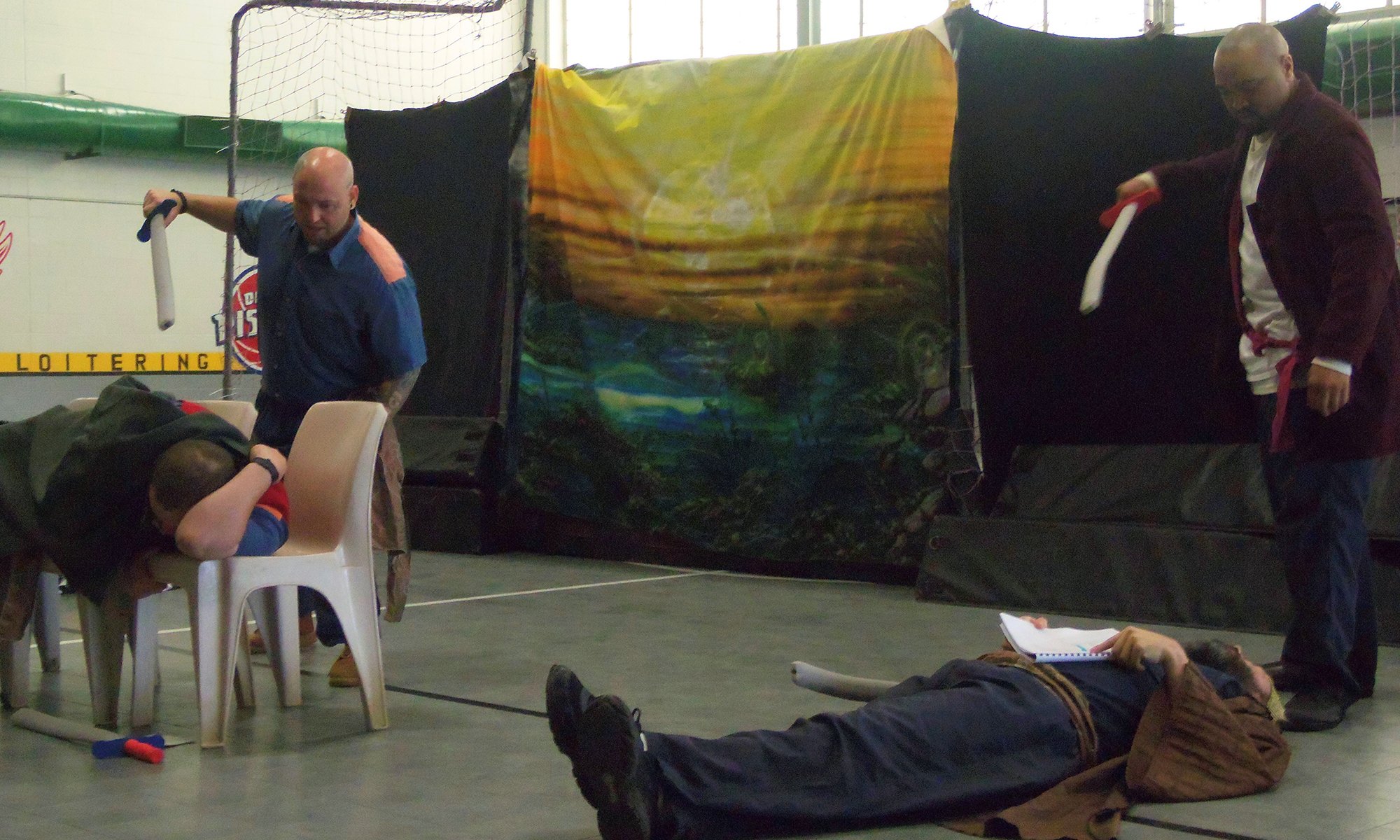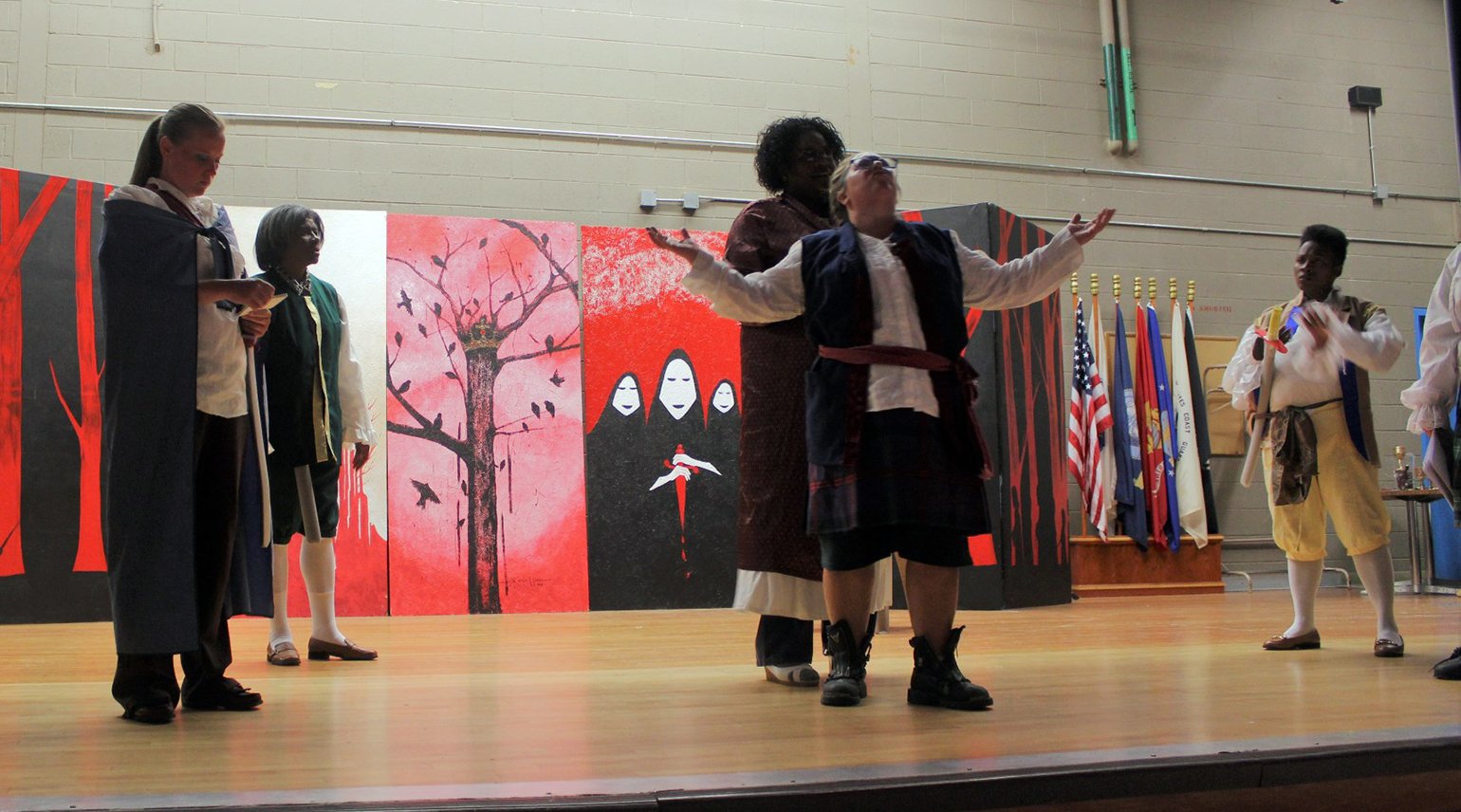Frannie Shepherd-Bates founded Shakespeare in Prison (SIP) at the Women’s Huron Valley Correctional Facility in Ypsilanti, MI in 2012 and expanded the work to Parnell Correctional Facility, a men’s prison in Jackson, Michigan, in 2017. Read Part One.
The men work in a gym with no theatrical lights. The lights in the women’s auditorium don’t always work. Even when they do, house lights and backstage lights must stay on during performances—rules of the venue. Shepherd-Bates loves the limitations. “The connection to the audience is never lost, and suspension of disbelief is never an issue. People sometimes forget their lines and jump in and out of character, but it’s some of the most transcendent theater I’ve seen simply because of where it’s occurring and because it’s so joyous.”
Staff and inmates in both facilities are directly involved in creating backdrops and pieces of scenery. A basic platform served for the balcony in Romeo and Juliet, but some sets are more complex—Taming of the Shrew featured a rotating platform with a fountain painted on one side and a fireplace on the other. People in the prison’s building trade program helped.

Photo courtesy of Shakespeare in Prison
There are art programs at both facilities, and men at Parnell have worked with airbrush painting. To create a backdrop, they sew together bedsheets, airbrush them, and string them between hockey nets in the gym, flipping them when a scene changes. Jamie Griffith, an academic teacher who was at Parnell, says the sheet backdrops “were incredibly detailed and layered. The athletic director oversaw the airbrushing, and he was willing to let us take the supplies and the airbrush tool out of his budget.”
“When the men created a banquet table for Othello,” Griffith says, “it crashed beautifully. We had to find ways to make sure nobody got hurt or got written up for misconduct or inappropriate use of equipment.”
One inmate sketched a castle backdrop that he and some other inmates painted for King Lear. Their concept was ‘London steam punk.’ “The whole thing is painted gray with cracks and spatter for texture, and the gears are brown and black. They also hung banners on either side, one indicating Regan’s house and the other indicating Goneril’s,” says Shepherd-Bates.

Photo courtesy of Shakespeare in Prison
Shields came in and out and hung on the backdrops that are associated with Lear and Gloucester, depending on what’s going on. “He made some sketches of the shields and banners. And to top that all off, he’s made ‘cue cards,’ usually index cards that they use in rehearsal, so they don’t have to carry scripts. He made them out of small gears that match the backdrop!”
For Richard III, a folded table, covered by a sheet and artificial flower garlands, served as a coffin. Tunics made from bedsheets suggested ghosts. White neutral masks glued to thin, wooden dowels that could not be used as weapons, with no string behind them, completed the look. “Every time somebody died, a ghost captain held up a mask for the person about to die,” says Shepherd-Bates.
“It was really difficult for us to get props. Everything has to be approved through the warden’s office,” says former inmate Justin Greenlaw, who is currently in the process of starting a non-profit to help advocate for incarcerated people and their families. “When we first started, we did scenes from Macbeth with no props.” The troupe spent more time on Othello and worked with some basic props and accessories that suggested character. “Usually, each person had a piece of clothing to show what they represented.” A sash, a hat, and a vest were among the items; audiences knew they were seeing a particular character when they saw an item, a shawl for Desdemona for instance. “The audiences loved it and were completely sold on that was Desdemona, that was Othello.”

Photo courtesy of Shakespeare in Prison
Eventually, the men would have foam swords. “We didn’t have them for Othello, so we made our own,” says Greenlaw. “We took newspapers and rolled them up and made two or three-foot-long swords. The tubes were compact so they could withstand hitting each other, and that blew people away. The play after, we had foam swords, and a fight choreographer came in to teach us traditional stage combat.”
Costumes must be worn over uniform tanks and shorts, and prisoners can’t wear the same colors as prison guards. “Some of the props had to be modified or changed. Certain outfits that might have been perfect for the character weren’t appropriate for where we were. There was a defining moment when my wardrobe changed. It was challenging to present that,” says Frederick.
They can’t have costume fittings, but Shepherd-Bates brings in many costume choices in a pallet they have decided together, clothes she thinks will fit the actors and the production concept they evolved together. Sometimes an actor will want to define a character with a kind of hat or other accessory, and that’s generally possible. Tunics that substituted for armor in several plays were made of shimmery silver material. Shepherd-Bates says when an inmate gets on stage in a silly hat and grass skirt, it transforms him.

Photo courtesy of Shakespeare in Prison
“We get resourceful,” she explains. “For Macbeth, the women thought it was important to delineate who was on which side at what time,” she explains. “One of the women designed a badge and another tracked who needed to wear it when. The badges were on Velcro so they could rip them off and change teams.”
Neither space is acoustically ideal. Shepherd-Bates creates sound from ideas inmates give her. Then she brings in an iPod and connects it to a speaker. Then men have a keyboard, too.
It all comes together for each show. “They look around this bleak environment to find something they can use to make the story come alive for themselves and for the audience,” says Griffith.
Stay tuned for more in Part Three!